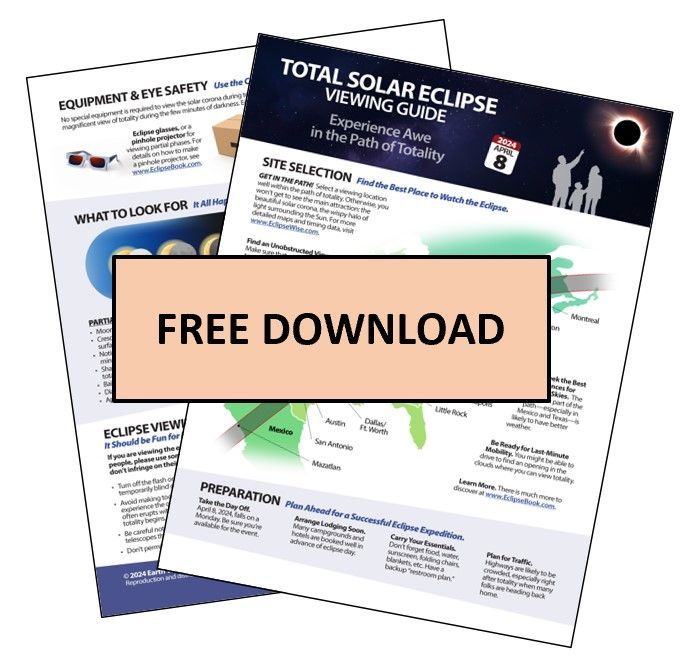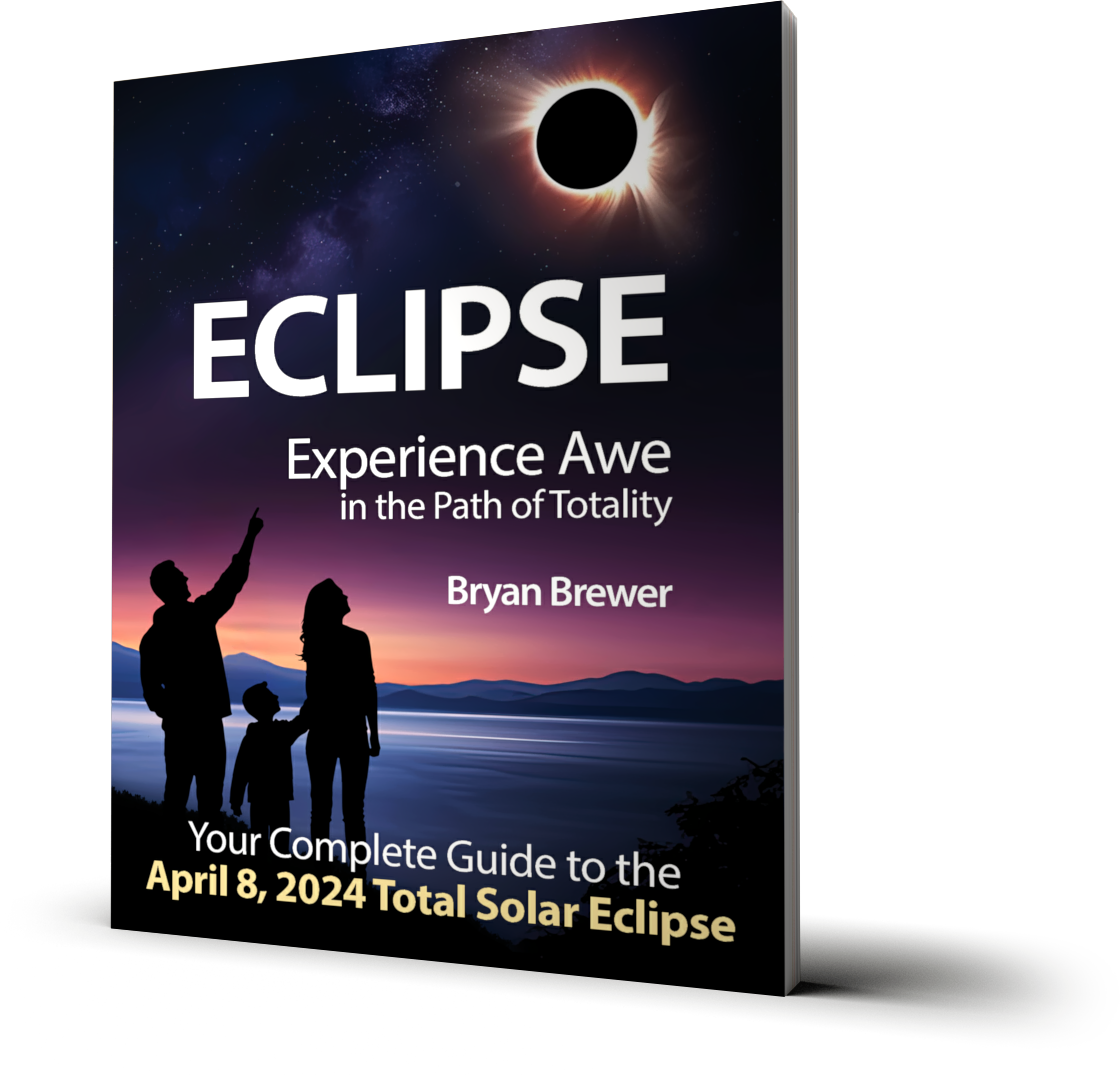Frequently Asked Questions & Answers
By Bryan Brewer, author of ECLIPSE: Experience Awe in the Path of Totality
1. What is it like to witness a total solar eclipse?
If you are in the path of totality, the sky will turn almost completely dark for a few minutes, and if you have clear skies, you will get this marvelous view of the delicate solar corona, or halo around the Sun, that isn’t visible at any other time. Most people feel excited or even stunned by this truly awesome experience.
2. Why are so many people drawn to see a total solar eclipse?
Seeing this most fleeting and beautiful spectacle in all of Nature typically evokes strong feelings of awe. Research shows that this powerful and pleasant emotion has many benefits: it calms the nervous system, it opens our hearts and minds, and it promotes pro-social behaviors such as empathy and cooperation. It’s only natural for people to seek out this kind of experience.
3. What should I do to prepare for the event?
First of all, make sure you find a viewing location that is within the path of totality, and the closer to the centerline the better. Consult the EclipseWise Interactive Google Map for details. If you’re outside the path, you just simply won’t experience the dramatic effects. And if you are traveling to be inside the path on eclipse day, plan to stay the night of April 8th because the roads are likely to be very crowded right after the eclipse with people heading home.
4. Do I need those special glasses to view the eclipse?
You should not look directly at the Sun during the partial phases before and after totality. Even a small crescent of direct sunlight can damage your eyes. So don’t take any chances: Use approved eclipse glasses, which cost only a few dollars and can be shared among a group. But remember to remove your eclipse glasses during the couple of minutes of totality so you can see the beauty of the corona with the naked eye.
5. How should I photograph or video the eclipse?
I recommend that unless you are an avid amateur photographer, that you don’t bother with trying to capture eclipse images during totality. This is especially true for a smartphone camera, which won’t really give you a very satisfying image. The grandeur of this event is best experienced simply by looking directly at the solar corona during totality. It’s a marvelous view. And you can also use binoculars to get a more detailed view during these few minutes of totality. As soon as totality is over, put away your binoculars and resume viewing the partial phases of the eclipse. It’s also fun to make video recordings of the euphoria many people express right after they witness totality.
6. When was the last total solar eclipse in the U.S? When and where is the next one?
The last eclipse across the continental U.S. occurred on August 21, 2017, and covered a path stretching from Oregon to South Carolina. The next major total solar eclipse widely visible in the U.S. happens on August 12, 2045. But if you get hooked on eclipses after seeing this one in 2024, and you can’t wait that long, you can travel to Iceland or Spain on August 12, 2026, for a chance to see the next total solar eclipse.
7. How did you get interested in writing the book?
In the late 1970s I was planning a reunion of some college classmates and learned about the 1979 eclipse that was going to happen in the Pacific Northwest. I started researching eclipses and before I knew it, it snowballed into a classic case of “I couldn’t find a good book on the subject, so I wrote one!” I was very excited to share the history and science of eclipses to help people get the most out of their experience. And I was fortunate to have Frank Herbert, author of Dune, write the Foreword to the First Edition of ECLIPSE.
8. How many total solar eclipses have you seen?
After the 1979 eclipse—at which the clouds parted to reveal a glimpse of totality for us—I led several eclipse tours around the world. First to Hawaii in 1991, where unfortunately we were clouded out at the last minute. But later tours to Brazil in 1994, to the Caribbean in 1998, and to Germany in 1999 were all successful. Most recently I witnessed a beautiful view of the Sun’s corona from Sun Valley, Idaho, on August 21, 2107.
Sign Up for News & Events to get the Free Total Solar Eclipse Viewing Guide



